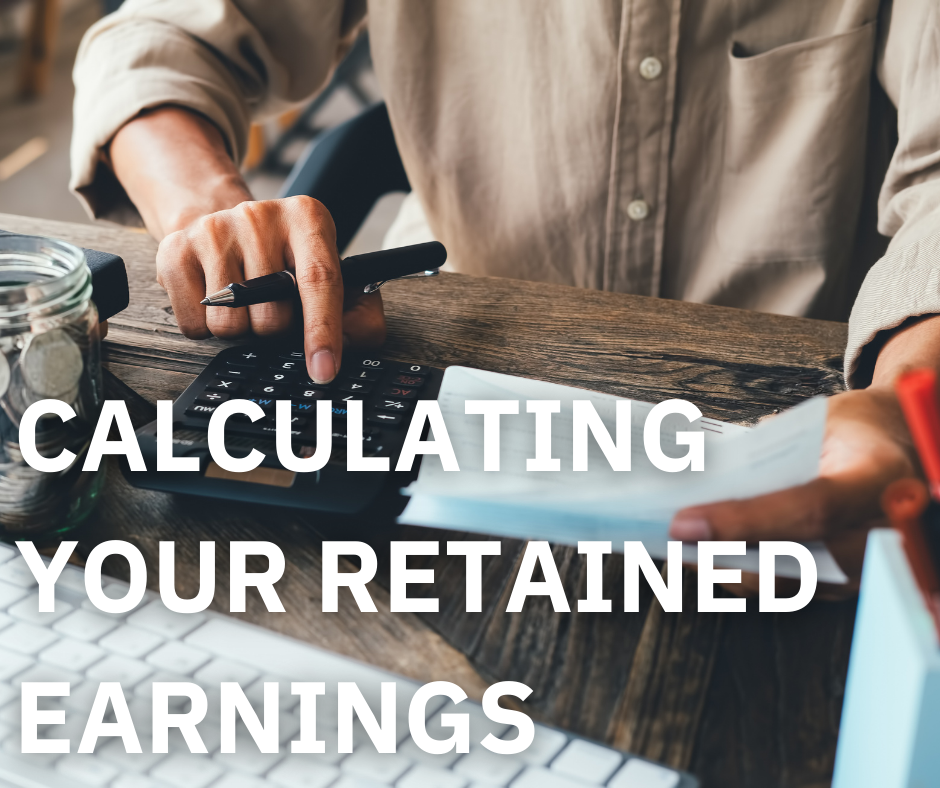What exactly are retained earnings?
First and foremost, what exactly are retained earnings? And, maybe more significantly, why should I consider it?
In practice, retained earnings are the profits produced by your company to date, less any dividends or other distributions given to investors. Even if you don't have any investors, it's a useful tool for learning about your company.
In other words, retained earnings are the portion of profits set aside for reinvestment in your company.
Retained earnings appear in two areas on your company's financial statements:
- on your Income Statement's bottom line (also called the Profit and Loss Statement);
- on your Balance Sheet's shareholder's equity section.
How to determine retained earnings?
Let's go into the arithmetic now that we've established what retained earnings are and why they're significant. You'll need three crucial pieces of information to determine your retained earnings.
- Your initial retained earnings balance: Retained earnings are determined on a period-by-period basis, which means they accumulate from one period to the next. To begin determining your current retained earnings, you must first determine what they were at the start of the time period you are computing (usually, the previous quarter or year). The beginning retained earnings can be seen on your previous period's Balance Sheet.
- Your current period's net income (or loss): It is essentially a fancy phrase for "profit." It is the amount of money left over after deducting your business expenses from your total revenue or sales. It can be found on your income statement.
- Dividends given to shareholders during the quarter or year: If your company now pays shareholder dividends, deduct the total amount paid from your previous retained earnings balance. If you do not pay dividends, you can disregard this section and enter £0 in place of this piece of the retained profits formula.
What percentage of my earnings should I keep?
Typically, retained earnings are evaluated in relation to a company's total assets. The ideal retained earnings-to-total-assets ratio is 1:1. (or 100%). However, that percentage is impractical for the majority of real-world businesses, so don't worry if you aren't there.
The truth is that retained earnings figures vary from company to company — there is no one-size-fits-all figure to aim for. Having said that, a reasonable goal is to achieve your ratio as close to 100% as possible while taking into account industry standards. From there, the goal is simply to increase retained earnings from period to period.
What exactly is the distinction between retained earnings and revenue?
It's simple to mix up the two. So, what's the distinction between them?
As previously stated, retained earnings are the total profit to date minus any dividends paid. According to Investopedia, revenue is "the income earned from the sale of goods or services produced by a corporation."
Revenue is more straightforward — it indicates the total capital generated by a company in gross sales. It does not account for costs, expenses, or dividends. It is also generally monitored on a period-by-period basis. This is separate from retained earnings, which are estimated up to the present.
The formula for retained earnings
Have you gathered all of the necessary data? It's time to get the calculator out. The basic formula for computing retained earnings is as follows:
Retained earnings = Beginning retained earnings + Period profits or losses – Dividends paid
As you can see, once you have all of the necessary data, it's a rather simple calculation – no flashbacks to trigonometry class required.
Still paying for accounting or doing computations by hand? Persona Finance can assist you in calculating your finances and advising you on the best course of action, whether you are a limited business or a sole trader.



